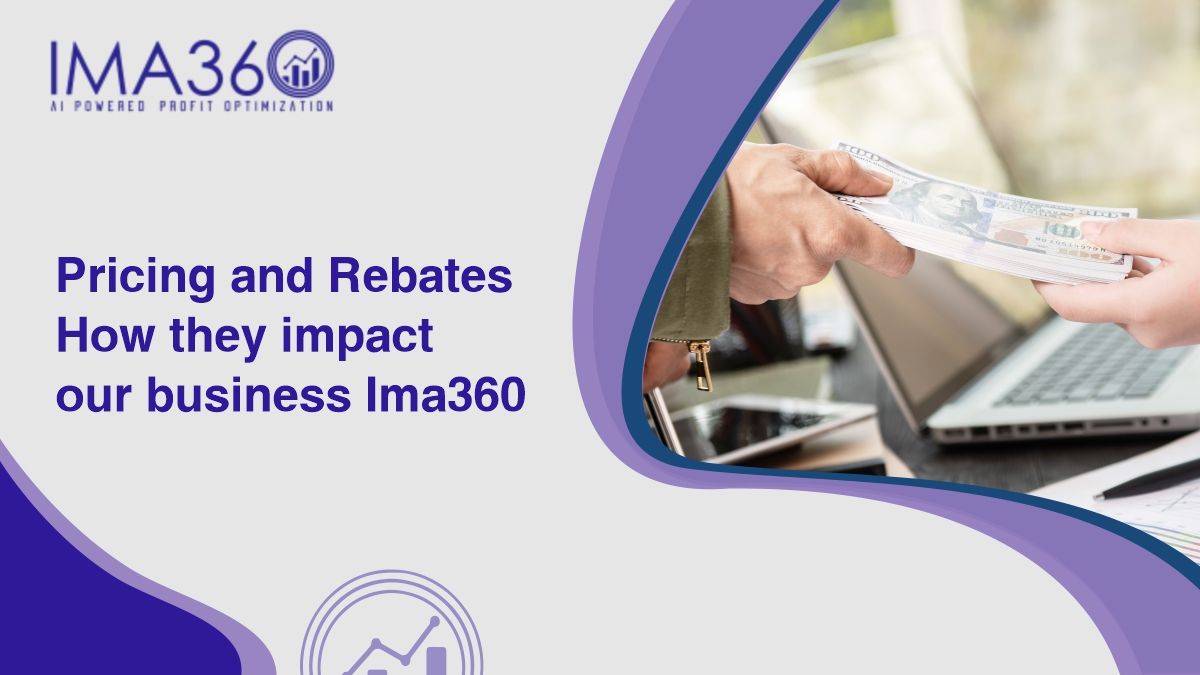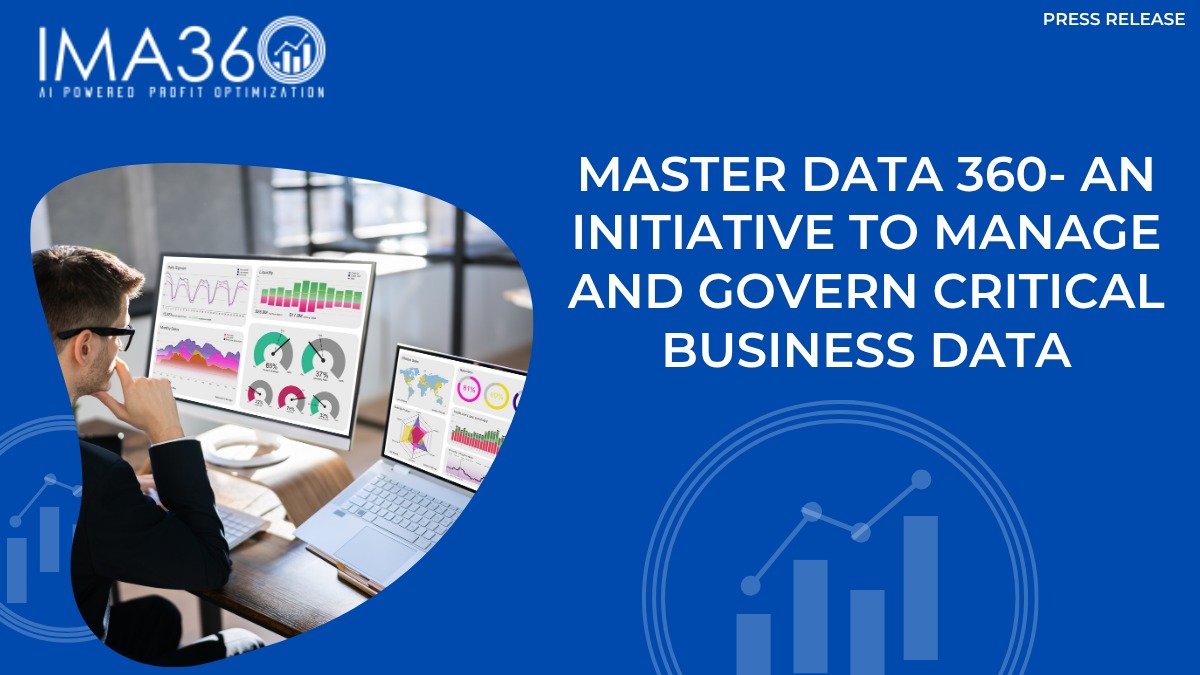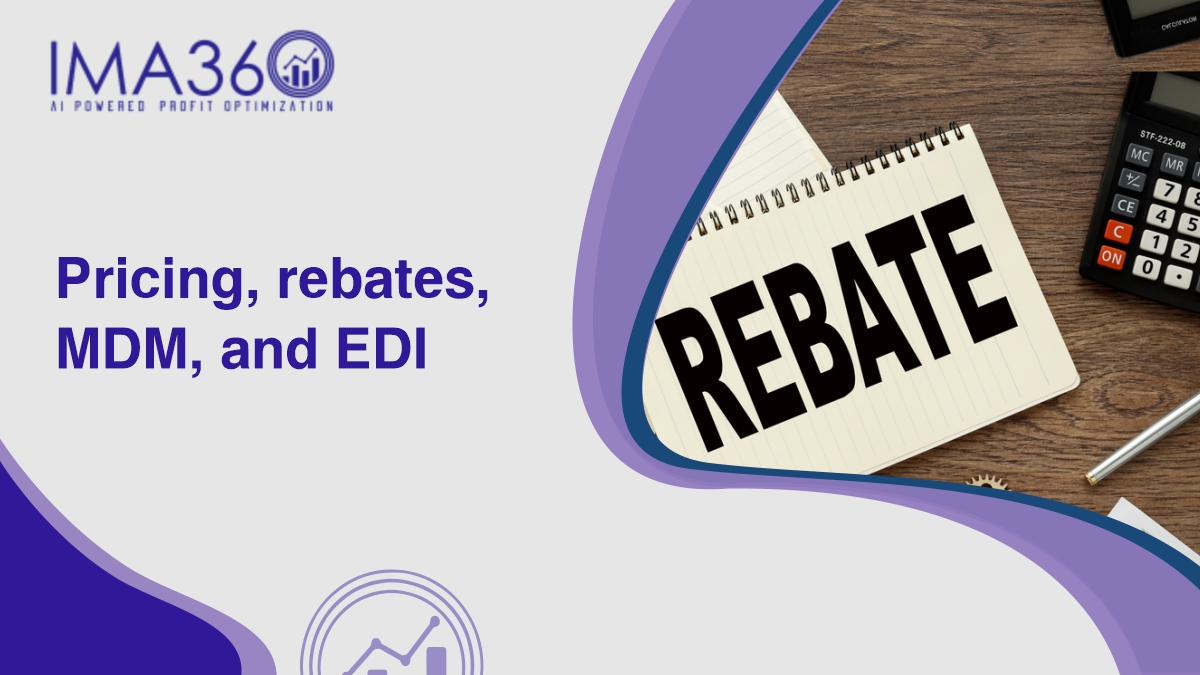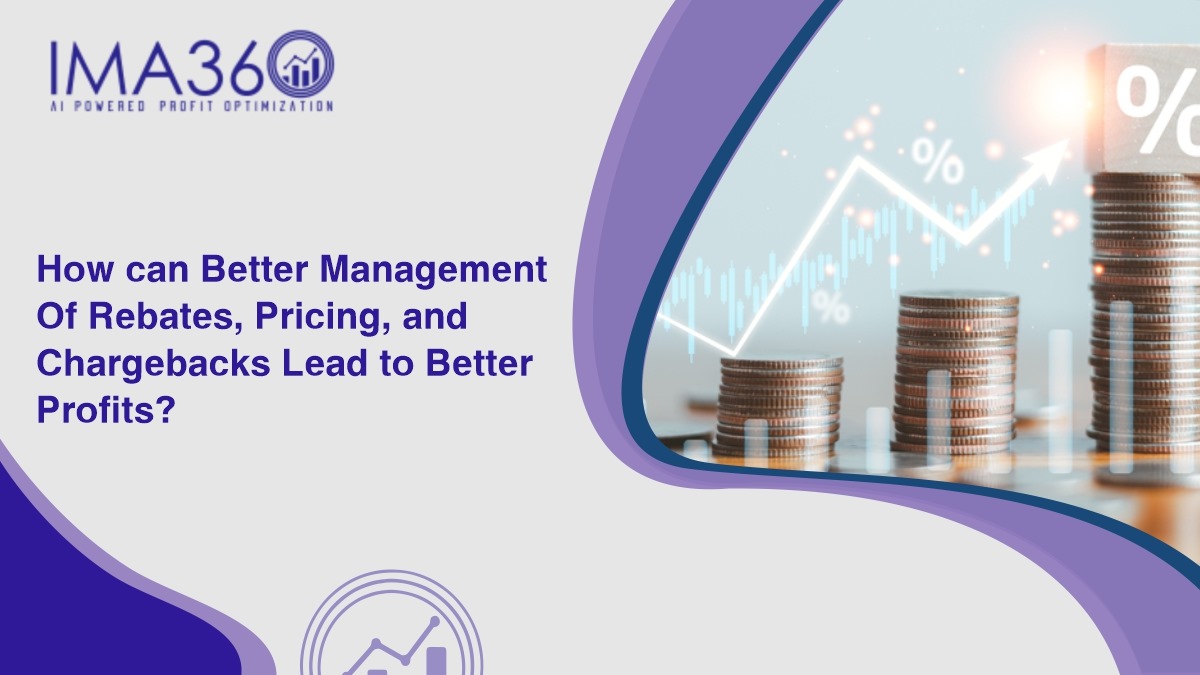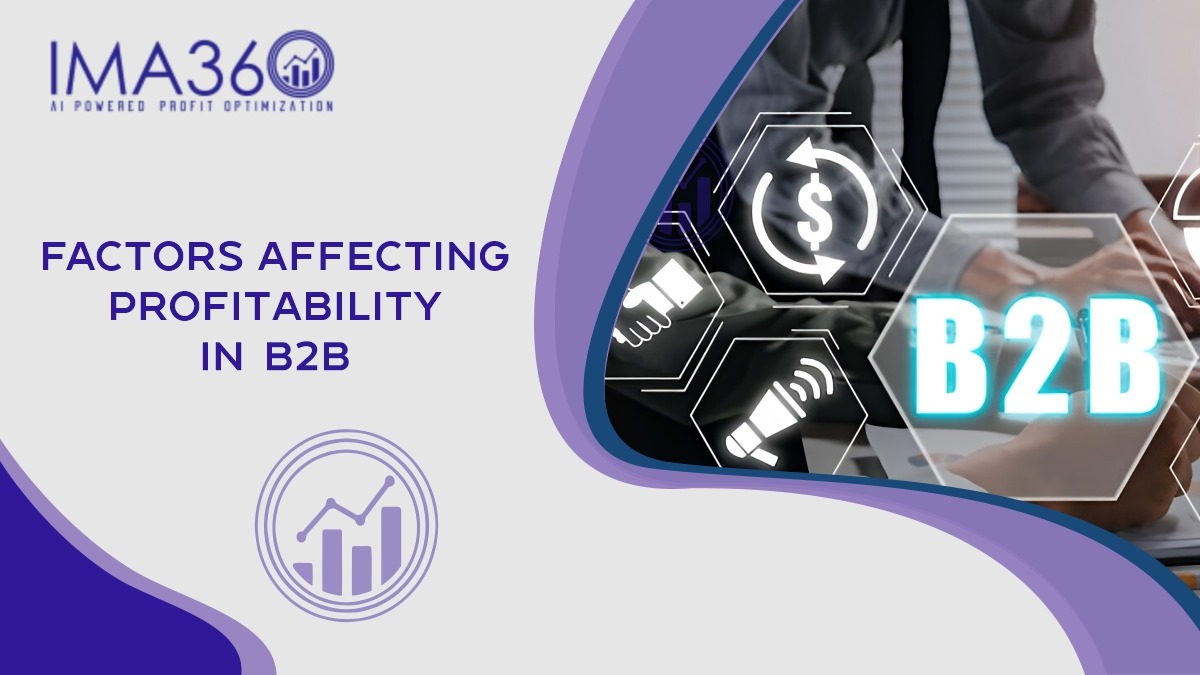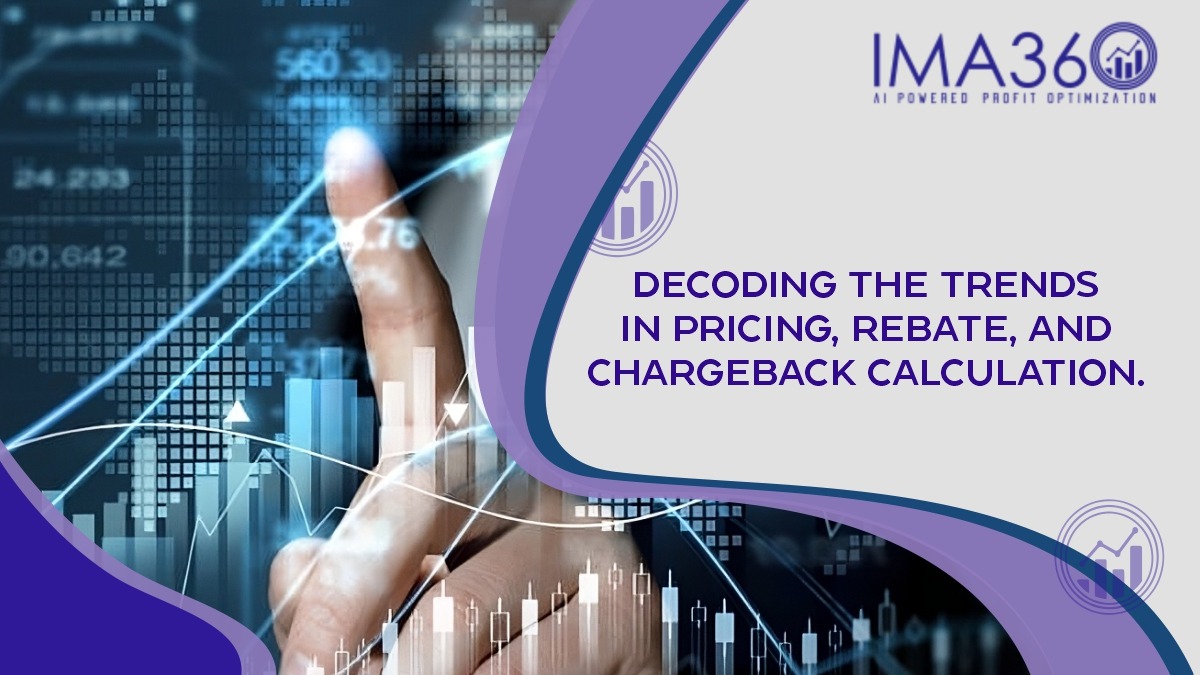Before we fully comprehend pricing optimization, it is essential to view pricing as a process.
Pricing is impacted by numerous variables. The primary factors that affect it include the demand for the product, the level of competition in the industry, the organization’s current financial situation, and the quality of the product being offered, among others.
These ever-changing variables complicate pricing. Furthermore, one must continuously monitor these variables to develop a robust pricing strategy.
In this blog, we will discuss various pricing strategies and models- their examples, pros, and cons. We will explore how AI and IMA360 can help optimize the process.
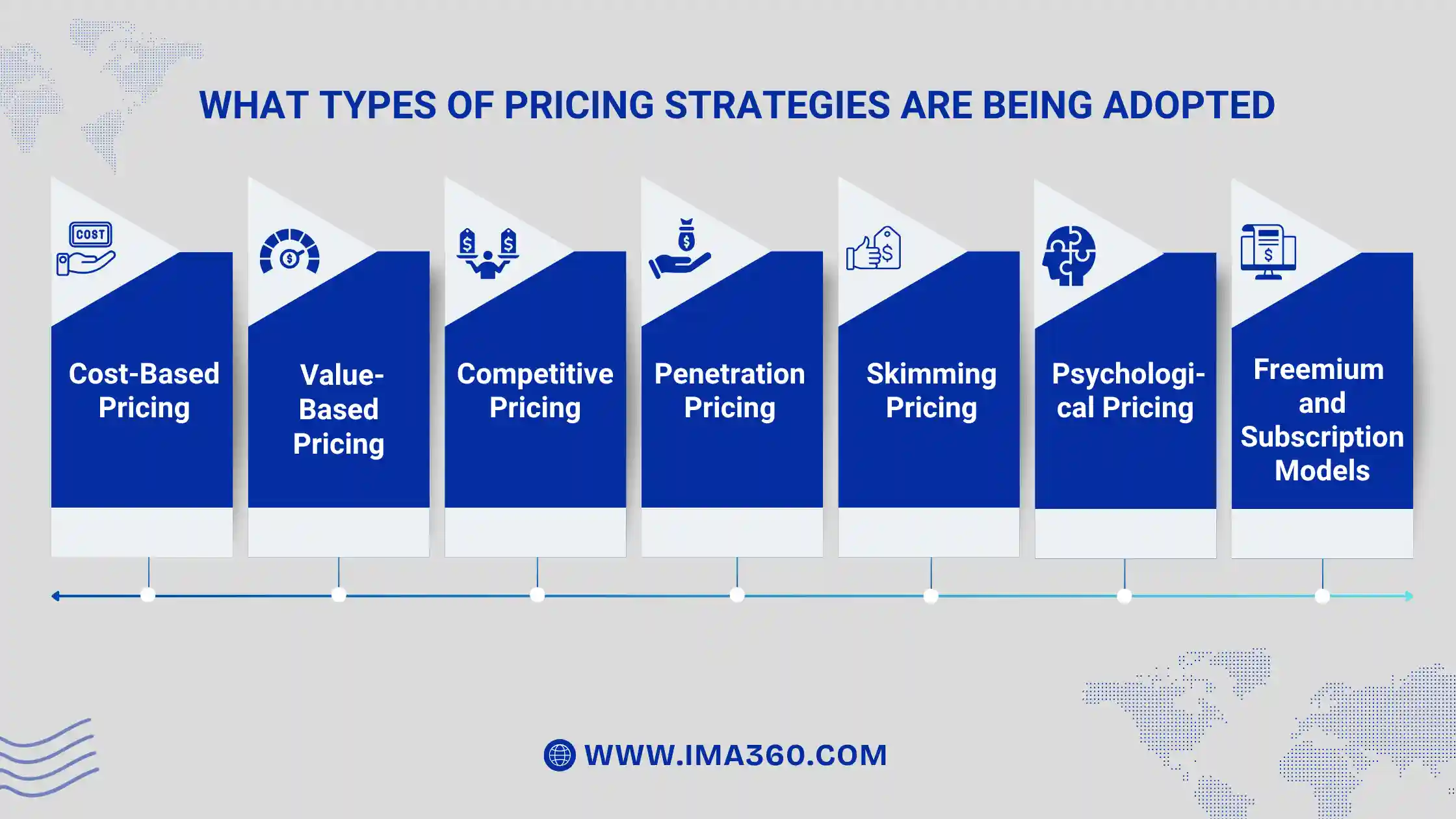
What types of pricing strategies are being adopted?
Pricing strategies refer to the methods companies use to price their products or services to achieve specific business objectives, such as maximizing profit, gaining market share, or deterring competitors. Below are the most common pricing strategies:
A. Cost-Based Pricing
- Definition: Setting the price based on production costs plus a markup for profit.
- Example: A manufacturer spends $100 to make a product and adds a 20% margin, selling it for $120.
- Pros: Simple to calculate and ensures costs are covered.
- Cons: Ignores market demand and competitor pricing.
B. Value-Based Pricing
- Definition: Pricing is based on the perceived value to the customer rather than the actual costs.
- Example: Apple prices its iPhones based on their brand perception and user experience rather than cost.
- Pros: It can result in higher margins.
- Cons: It requires deep customer insights and market research.
C. Competitive Pricing
- Definition: Setting prices based on what competitors are charging.
- Example: Some retailers adjust their prices to match Amazon or Walmart.
- Pros: It helps remain competitive in price-sensitive markets.
- Cons: It can trigger price wars and reduce profitability.
D. Penetration Pricing
- Definition: Setting a low price initially to gain market share, then raising it later.
- Example: Streaming services like Netflix start with low subscription fees.
- Pros: Rapid user adoption.
- Cons: It may be difficult to raise prices later without losing customers.
E. Skimming Pricing
- Definition: Setting high prices initially and lowering them over time.
- Example: Tech companies launch new gadgets at a premium, then reduce the price.
- Pros: Maximizes revenue from early adopters.
- Cons: Slower adoption from price-sensitive customers.
F. Psychological Pricing
- Definition: This pricing strategy considers psychological factors (e.g., $9.99 instead of $10).
- Pros: Perceived value is higher.
- Cons: Might not significantly influence purchase behavior in all markets.
G. Freemium and Subscription Models
- Definition: Offering basic services for free while charging for premium features (Freemium), or recurring revenue for continued access (Subscription).
- Example: Spotify or SaaS businesses.
- Pros: Encourages trial and increases customer lifetime value.
- Cons: Risk of free users never converting.
What are the most commonly employed pricing models?
Pricing models are the frameworks that companies use to determine prices based on certain criteria. They’re often aligned with strategy but are more granular or operational. Some of them are explained below-
A. Fixed Pricing
- A static price that does not change with demand or other variables.
B. Tiered Pricing
- Prices vary based on volume or feature tiers (common in SaaS).
C. Usage-Based Pricing
- Charges customers based on how much they use a service (e.g., AWS, utilities).
D. Dynamic Pricing
- Prices change in real-time based on market demand, inventory levels, and competitor activity.
- Common in airlines, hospitality, and ride-sharing (e.g., Uber’s surge pricing).
E. Bundled Pricing
- Multiple products or services are sold together at a combined price.
F. Pay-What-You-Want
Customers choose what they pay for. This model is often used for donations or experimental models.
What is the Role of AI in Pricing Strategy?
AI is revolutionizing pricing through data-driven automation, enabling smarter, faster, and more granular decisions. Here’s how:
A. Dynamic Pricing with AI
- Real-Time Adjustments: AI uses demand forecasting, competitor pricing, customer behavior, and inventory levels to update prices instantly.
- Example: E-commerce platforms adjust prices every few minutes based on web traffic, cart abandonment, and competitor actions.
B. Price Optimization
- AI models simulate customer responses to various price points and suggest the optimal price to maximize revenue or profit.
- Uses techniques like:
- Regression models
- Reinforcement learning
- Conjoint analysis
C. Segmented Pricing (Personalization)
- AI clusters customers by behavior, value, or price sensitivity.
- Enables:
- Targeted discounts
- Personalized offers
- Geo-based pricing
D. Demand Forecasting
- AI predicts short- and long-term demand using historical sales data, seasonality, macroeconomic indicators, and weather.
- Better forecasts inform more accurate pricing and inventory planning.
E. Competitor Price Monitoring
- AI can scrape and analyze competitor prices in real time, suggesting changes to remain competitive without manual input.
F. Elasticity Modeling
- AI measures how price changes affect demand for different products, helping businesses understand their pricing power and adjust accordingly.
What are the benefits of AI-Powered Pricing?
- It automates pricing decisions in real-time.
- It helps manage thousands of SKUs/products efficiently.
- It helps use vast data sets and machine learning to reduce errors.
- It offers insight on the price point that maximizes profit, not just sales.
- It makes sure that we don’t overprice our loyal and price-sensitive customers.
How can IMA360 help?
IMA360 is an AI-powered profit optimization platform. It takes a unified and complete approach towards profit optimization. Just as 360 degrees represent a complete rotation, IMA360 represents a complete solution to automate, manage, and optimize pricing, rebates, promotions, chargebacks, contracts, sales commissions, royalties, and reimbursements.
In essence, we help you augment your margins, gauge future trends in pricing, formulate robust pricing strategies, support dynamic and CPQ pricing models, and analyze competitors’ pricing strategies.
In summary, we are a profit optimization platform that can be further divided into-
- Pricing optimization software
- Rebate management software
- Promotion optimization software
- Royalty management software
- Chargeback optimization software
- Sales commission management software
All the above solutions can be used solely and independently to address a specific need, like the pricing software to manage pricing and the rebate management software to manage rebates.
Or you can go for the entire package to optimize, manage, and automate all the attributes, namely pricing, promotions, rebates, chargebacks, contracts, royalties, sales commissions, and revenue.

Deepak Bhardwaj has 10 years of experience advocating AI for profit and revenue optimization, data security, and analytics.
He has partnered with customers in USA, UK, and the APAC region to help them with suitable AI solutions as per their needs.


